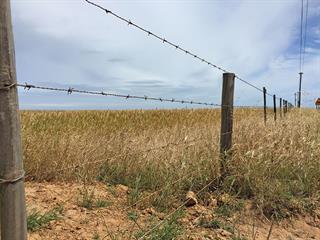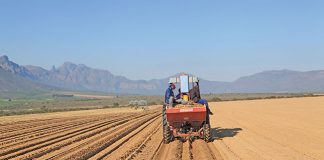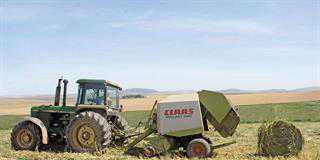
When considering the effects of the drought in the western wheat production area of South Africa’s winter rainfall region in the Western Cape and the northern to eastern parts of KwaZulu-Natal, it should be borne in mind that different timescales are involved.
Conditions in these regions must be considered in the context of historical variability by means of a Standardised Precipitation Index (SPI) data set. Using rainfall data from the Agricultural Research Council (ARC) and the SA Weather Service, the SPI quantifies precipitation deficits in different timescales for identifying drought and/or excessively wet situations.
Western Cape
According to the SPI for winter 2015, the western wheat production area of the Western Cape was negatively affected by dry conditions towards the latter part of the winter rainfall season. Yields are expected to be below normal for the first time in five years, with the largest deficits expected towards the Sandveld.
Atmospheric circulation patterns favoured the southern to eastern parts of the Western Cape for precipitation. The same patterns resulted in a weaker north-westerly flow over the western parts, leading to less rain. Frontal systems moving across the region were associated with westerly to southerly winds, resulting in significant falls over the Rûens and Garden Route on several occasions, while the western regions received only light to moderate falls (Figure 1).

The previous lowest
SPI value over both the western and eastern production areas was recorded during an El Niño event in 2004/2005 (Figure 2). The SPI values for the past 10 years were relatively high over both the western and eastern production areas, while the current SPI value over the western production area is the lowest recorded since 1980.

KwaZulu-Natal
On the other side of the country, drought over a longer period in KwaZulu-Natal has had an adverse effect on the availability of water in that region. In central to northern KwaZulu-Natal, the drought has prompted water restrictions. The low level of rivers and storage reservoirs is indicative of a hydrological drought, the result of the cumulative effect of a prolonged period of below-normal rainfall.

The 24-month SPI of September 2015 (Figure 3) provides an indication of the current hydrological drought situation over eastern KwaZulu-Natal compared with the situation over the western parts of the province. The drought over some of KZN’s eastern areas at the 24-month timescale is similar in intensity to the worst droughts of the past century (Figure 4). Other droughts similar in intensity (SPI lower than -1,5) over this period were observed in 2004, 1993, 1952, 1946 and 1924.

Rainfall over the western parts of the province was only slightly below normal and the SPI of -0,5 as calculated for an area near Estcourt indicates a more favourable situation – although still relatively dry – compared with the historical range of two-year accumulated rainfall values.
The period between 2004 and 2010 was much more favourable over the western parts of KZN (including the Estcourt region) than in the eastern parts (including the Eshowe region), where 24-month SPI values remained in the lower ranges during that period.
The relatively dry multi-year period preceding the current hydrological drought may further indicate larger potential negative effects of the current drought situation over north-eastern and eastern KZN.
Source: McKee TB, Doesken NJ, Kliest J: ‘The relationship of drought frequency and duration to time scales’, Proceedings of the 8th Conference on Applied Climatology, 17-22 January, 1993, Anaheim, CA. American Meteorological Society: Boston, MA; 179-184.
Phone Dr Johan Malherbe on 012 310 2577 or email him at [email protected].













